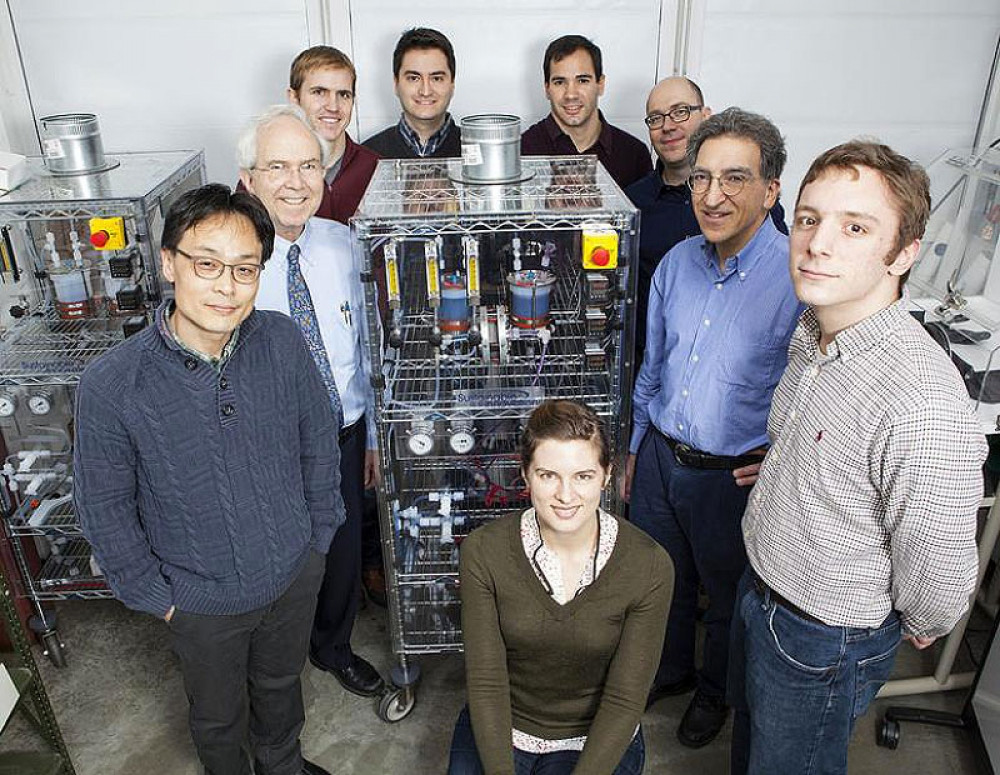Biomimicry: What plants can teach us about storing energy... Good bye, fossil fuel dependency!

The main challenge with sun and wind energy is storage. Because the sun isn't always shining, and the wind isn't always blowing, we need to be able to bank away renewable energy when it's available for times when it is not. A team from Harvard is learning how to do just that... from plants. They are looking to photosynthesis as a model for safely and economically storing unlimited amounts of electricity. The idea is called a "flow" battery because energy is stored in fluids in twin tanks of any size - one tank for charged fluid, and one for discharged fluid. The power storage capacity is limited only by the size of the storage tanks, which simply pass fluid one direction to load energy in for storage, and the other to release it for use later. That's old news; people have been tinkering with flow batteries for a while, but they have been using metals in the fluids and the results have been expensive, weak, and unstable. So here is the breakthrough: Lose the metals, and do this like plants do it, with organic chemicals.
A report from January 8, 2014 in Nature details a breakthrough in the search for a metal-free flow battery that uses abundant, inexpensive organic molecules called quinones. Quinones are a class of carbon based compounds important in photosynthesis in plants and protein formation in animals. "With organic molecules," according to Roy Gordon of the Harvard School of Engineering and Applied Sciences, "we introduce a vast new set of possibilities." They tested more than 10,000 different molecules in search of one with high efficiency and energy storage capabilities. The molecule singled out by the team is almost identical to one found in rhubarb.
This radically elegant fluid battery concept uses water, not sulfuric acid - safe and healthy. The solution costs a third of metal-based flow battery fluids, and has performed well with no sign of degradation after more than 100 cycles. The research team is optimistic that with further research, the quinone based flow battery will see huge improvements in efficiency and cost reduction. "The intermittent renewables storage problem is the biggest barrier to getting most of our power from the sun and the wind," says professor Michael Aziz. "A safe and economical flow battery could play a huge role in our transition off fossil fuels to renewable electricity. I'm excited that we have a good shot at it."
